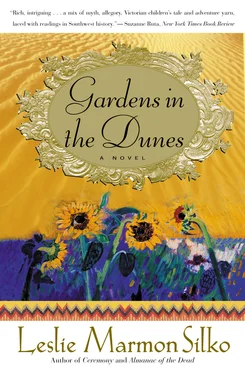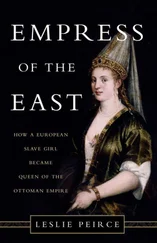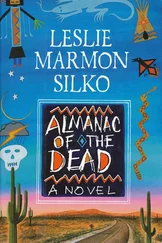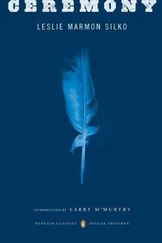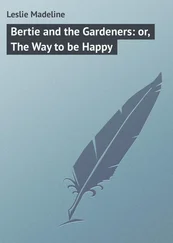The actual unloading and planting of the two beech trees required another two hours after they arrived. Indigo watched with Edward and Mr. Abbott as the workmen attached chains and ropes to pulleys and the horses lifted the giant trees slowly off the wagons and set them in place. Susan joined them to express her concern the trees might not recover their vigor and appearance in time for the ball, but the Scottish gardener gave her a brisk nod that seemed to reassure her.
As soon as the trees were securely planted, Susan turned her attention to the blue garden itself; she invited Edward and Indigo to join her because she needed advice. The spring and early summer had been unusually dry, and the mainstay of blue gardens, the delphiniums, had suffered considerably and replacements must be found. The blue pansies and the violas were stunted, and the salvias, in so many hues of blue, were hardly better; besides, they were so common in blue gardens.
They followed her down the path to the outbuildings behind the house and gardens. Narcissus in July? Wisteria flowers in midsummer? Here was where it was all done; Susan opened the glass door and cold air rushed refreshingly against Indigo’s face. The Scottish gardener’s cold greenhouse was chilled with blocks of ice delivered three times a week; even the intensity of the light in the glass house was controlled, with muslin shrouds to affect the length of day so the big pots of wisteria, pruned into graceful trees, would bear cascades of sky blue and pure white blossoms for the Masque of the Blue Garden. Pots of blue irises, even big boxes of blue lilacs and blue rhododendrons, would adorn the ballroom, Susan explained.
Whites were as important as blues in the moonlight; on the night of the ball, pots of white wisteria and white bougainvillea would festoon the arches and gateways; cascades of pendulous white and blue wisteria would cover the long marble loggia completely. White lilacs and white azaleas would be scattered among the blue lilacs and blue rhododendrons for drama.
But what to plant in the flower beds around the lily pool? Every year Susan anguished over her choices: blue hydrangeas, blue campanulas, blue cornflowers, blue asters, blue lupines, and pale sky blue columbines were on her list of candidates. Weeks ago, the gardeners had planted every sort of blue-flowering plant imaginable, but now Susan must decide which plants would compose this year’s blue garden.
Surely Edward would help her choose; she wanted the blue garden to hold something new and visually exciting, but something resistant to heat as well. Edward and Indigo followed Susan into the adjoining glass house that was much warmer. Here the damp earth smell enclosed them and Indigo felt a thrill when she saw big baskets of orchids hanging from the ceiling structure. This glass house was much larger than the one in Riverside.
The orchids shared the space with the bedding plants for Susan’s new English landscape garden and, of course, this year’s bedding plants for the blue garden. The glass house delphiniums, the belladonna — both grandiflorum and the Chinese — were thriving in here, but outdoors their older siblings, transplanted weeks before, showed the ravages of drought and heat. The Anchusa azurea , or blue Asian bugloss, growing next to the delphiniums was far less demanding, though its blossoms not as long lived, but they had to last only one night — the night of the ball. Pale blue spiderworts thrived on the other side of the delphiniums, but they preferred cloudy weather and were planted only in case the summer turned wet and cool.
The blue flowers of the Gentiana were wonderful but they would never last in the heat. Edward chose the blue globe thistle and the blue datura for the background, with bluegrass planted with blue Gladiolus byzantius . Jacob’s ladder and blue balloon flowers went next to the blue Carpathian bellflowers. Of course, a veronica of deep blue must be planted with the myosotis; the forget-me-not and the blue Persian cornflowers should be edged with sapphire lobelia.
In low white marble planters near the coolness of the pool’s edge, Aconitum falconeri , blue monkshood, and rare blue primulas would be complemented with blue foxglove. For dramatic effect among the blue flowers, there were drifts or scatterings of white lilies and white foxgloves, white hollyhocks, and bushes of white lavender and white tree lupines. In the blue borders bushy white asters and phlox were planted with white artemisia and white Canterbury bells.
Susan took notes as Edward called out the flowers’ names, and Indigo examined them carefully. She wanted to remember each detail of the leaf and the stalk for all these plants and flowers so she could tell Sister Salt and Mama. She picked up seeds and saved them in scraps of paper with her nightgown and clothes in the valise so she could grow them when she went home.
The dampness steamed the glass but in the next room Indigo could see the tops of palm and banana trees. Dozens of bark fragments covered with jade green moss were planted with hanging orchids, and big pots of orchids lined the walks between the benches that held dozens of potted orchid plants. Edward stopped when he saw the two big Laelia cinnabarina , their fiery orange-red blossoms cascading from their hanging baskets. He felt unexpectedly moved by their magnificent beauty, and the sight of the blossoms overcame him with vivid memories of the fire and his accident. Although he helped collect nearly eight hundred plants, he returned from Brazil without a single specimen of the cinnabarina for himself; the storm and the salt water saw to that.
“Expensive specimens,” Susan said when she saw him pause to examine the cinnabarina .
“Yes, expensive,” Edward murmured, and wondered if these two cinnabarina were specimens he helped to collect. The humidity of the orchid room suddenly made Edward feel unwell. He looked anxiously at the glass house door.
Once they were outside the glass house, Edward stopped to look back at the workmen digging up old path stones in the ruin of the circular garden of herbs. Edward thought Susan was foolish, so he said nothing; only now had the Italian gardens reached their full maturity to reveal the vision of the architect, yet the gardens were being destroyed. His sister might transplant great trees all she wanted, but she would not see her new English gardens reach their maturity unless she lived to be quite old.
“I’m glad you spared the lemon garden,” Edward said, because he was fond of the balustrades of pale limestone with the old lemon trees in their white stone pots along the walk.
“Actually I’ve not decided,” Susan said over her shoulder as she walked up the path to the lemon garden, “but all the statuary must go. The marbles are white Carrara, but they’ve not weathered well in most instances.” Edward noticed no damage; the gardens were well protected. She glanced at the two fat cupids embracing and Edward realized she was concerned about the propriety of the nude figures now that Josephine and Anna were young ladies. The noses and facial features of the marbles naturally softened with time, but there were other prominent features on the marbles not eroded enough.
Edward pointed out the interplay of shade and sunlight and the hues of green were soothing and cool; the Italian gardens here complemented the design of the house and were refreshing havens from the heat. The careful plantings of linden and plane trees, now mature, filtered the light to a lovely, luminous green-yellow, while the darker greens of the hollies and rhododendrons were inside the cool shadows.
Susan gave an impatient wave of her hand. At the time the architect designed the house and gardens she was newly married and had few ideas about gardens. Now she found the arrangement of shrubs and trees according to their hues of green artificial and boring; the geometric topiary forms were ridiculous. She wanted a natural garden filled with color — an English landscape garden with swaths of flowers in all colors from the bright to the shade. Edward asked for a reprieve for the lemon garden.
Читать дальше
